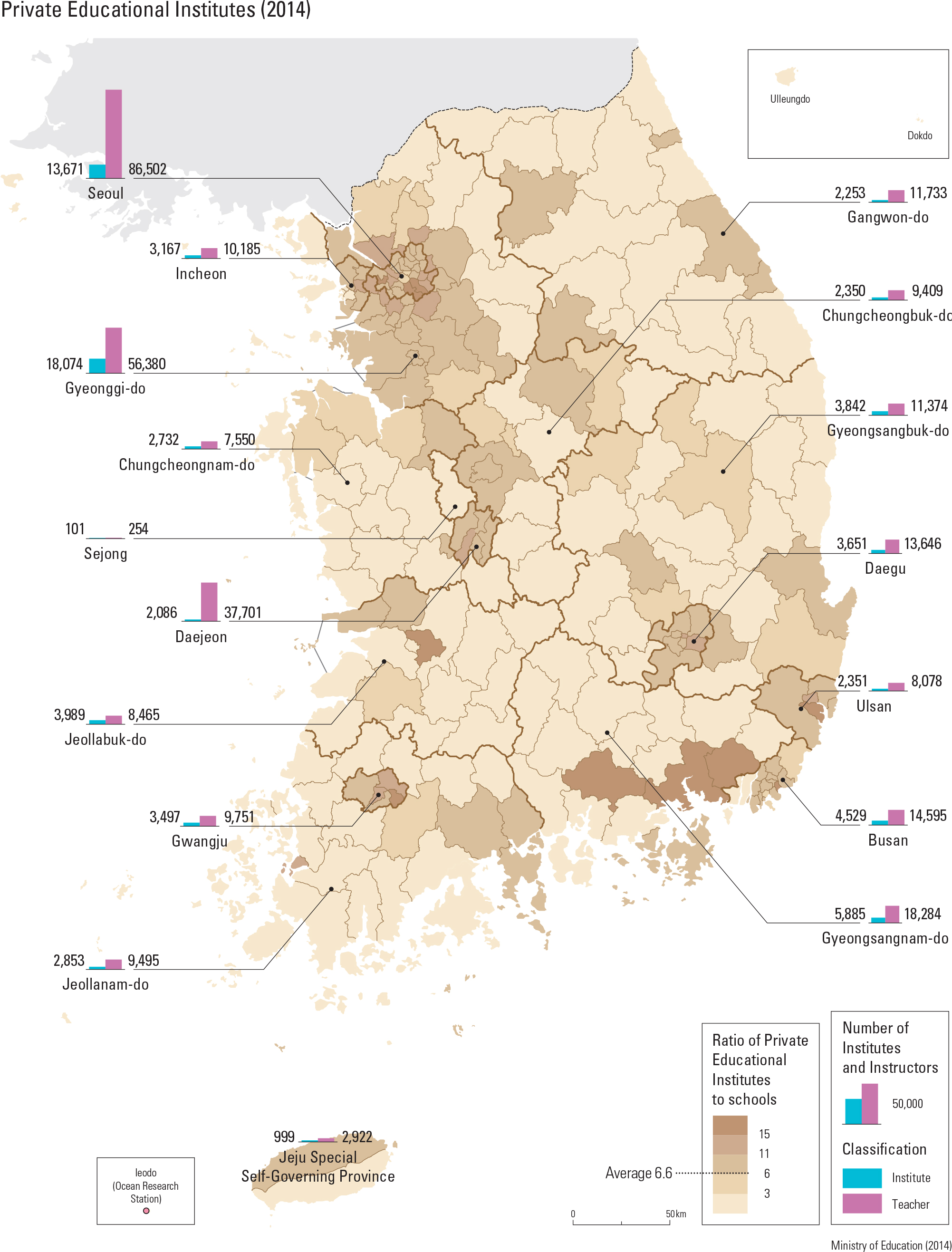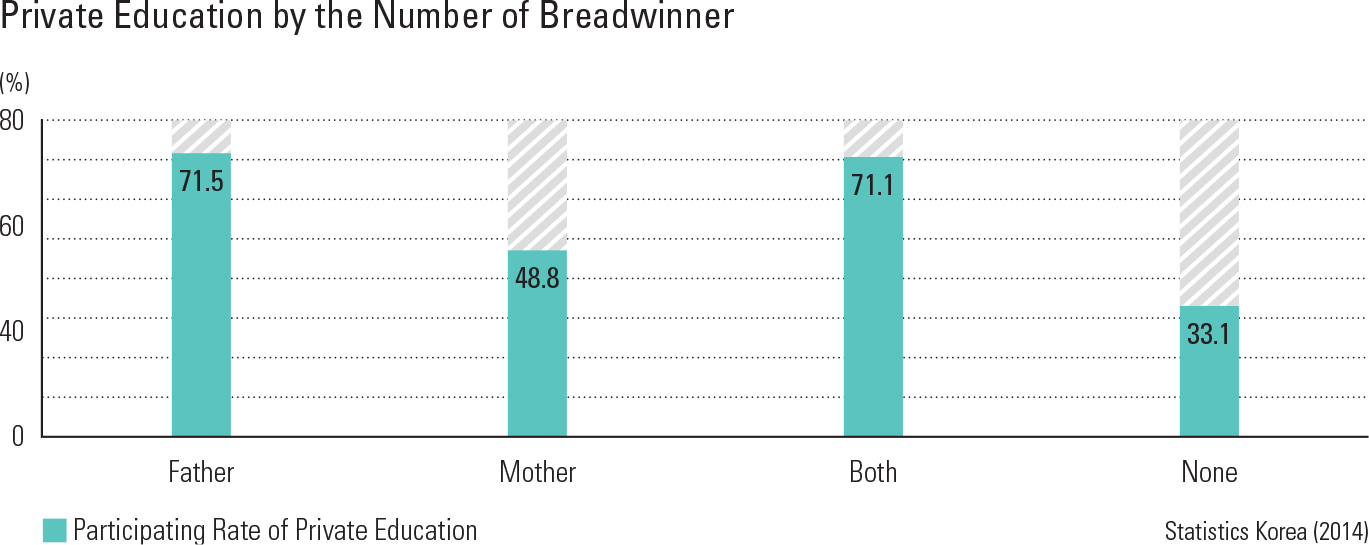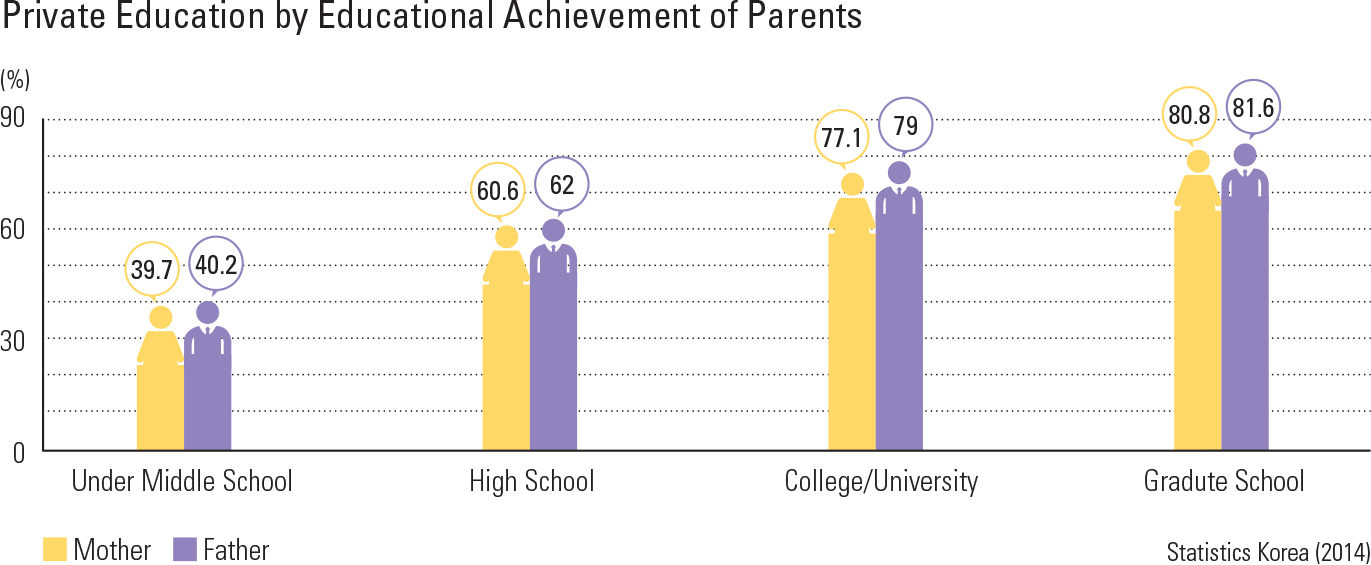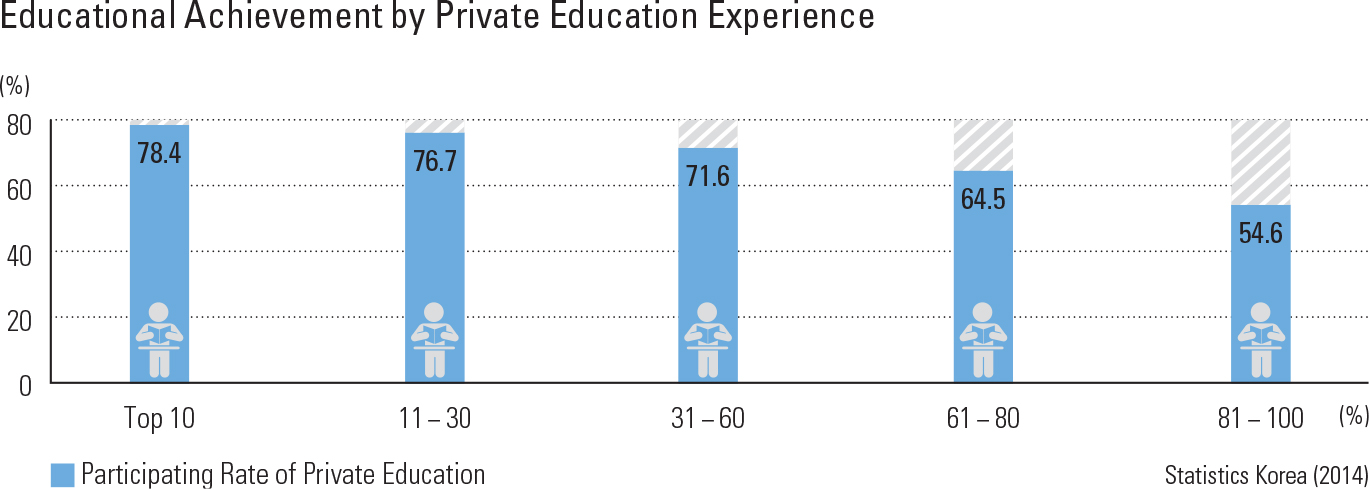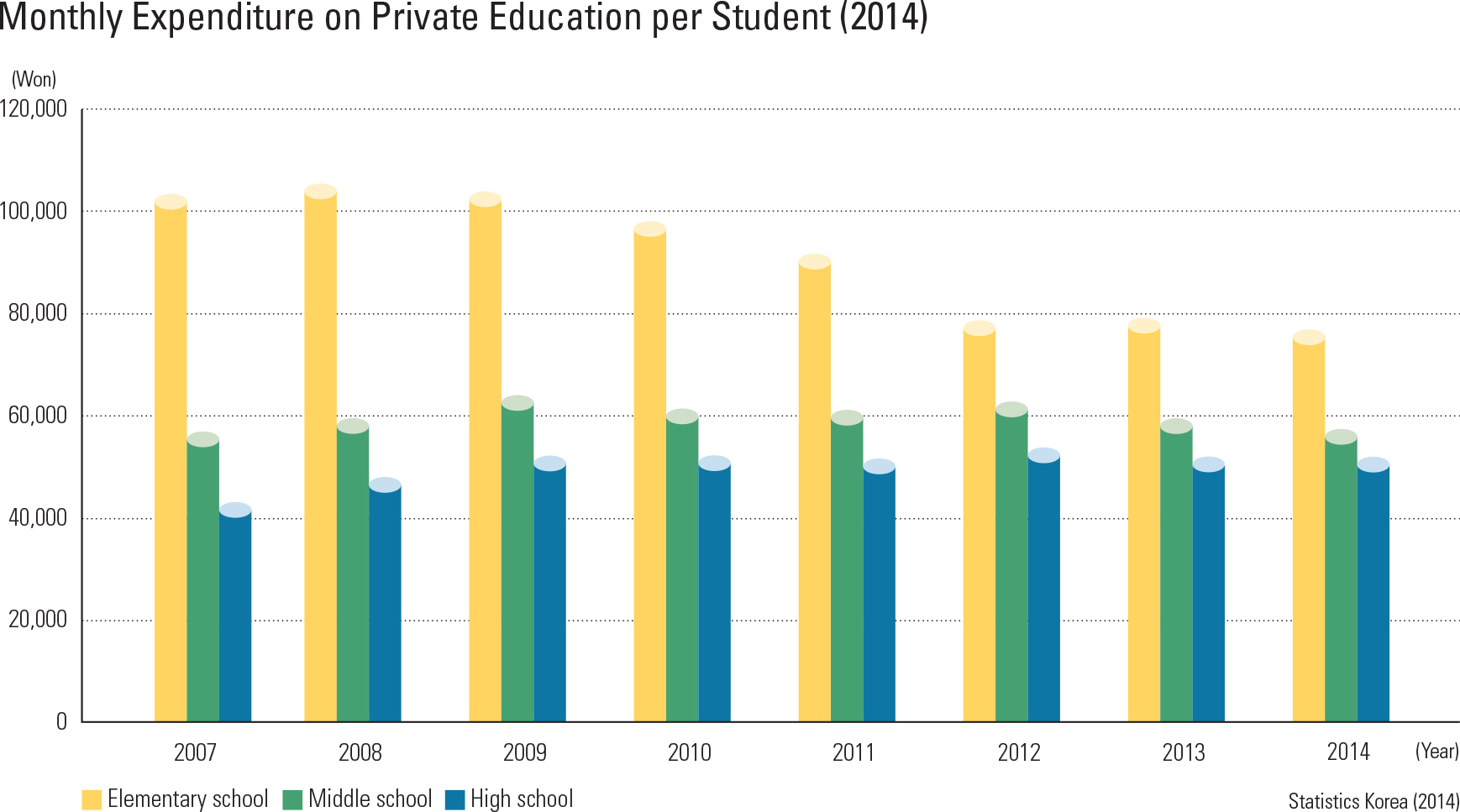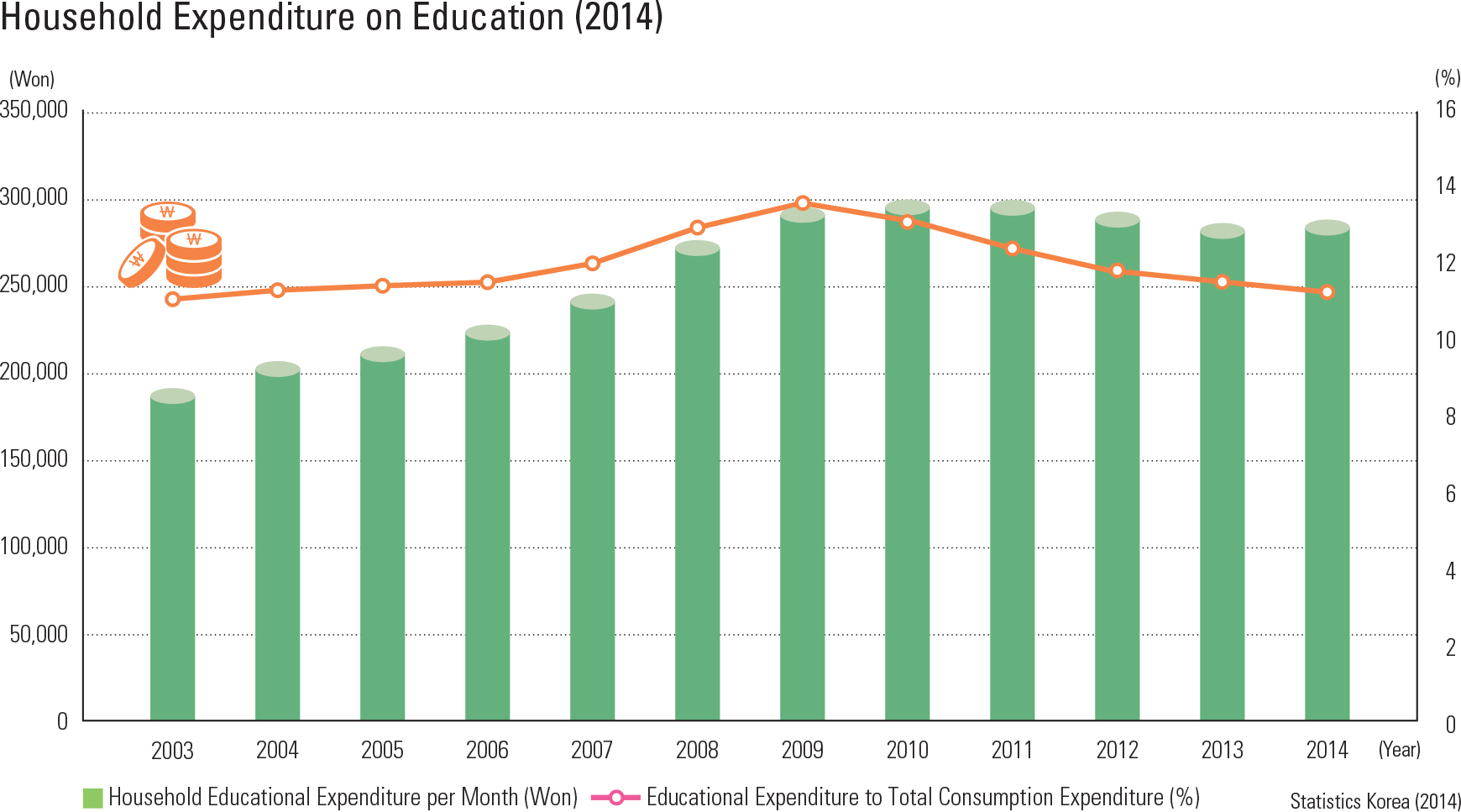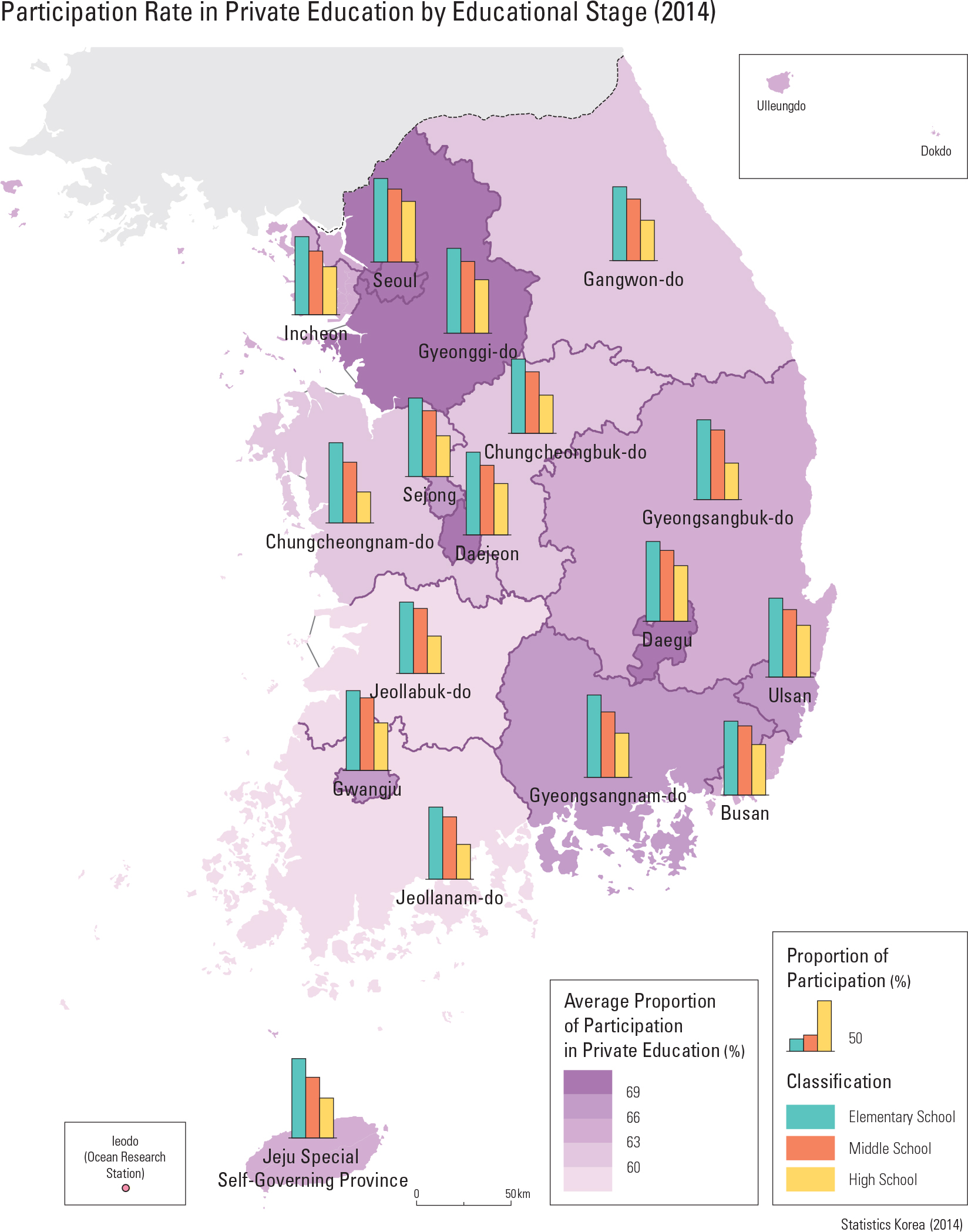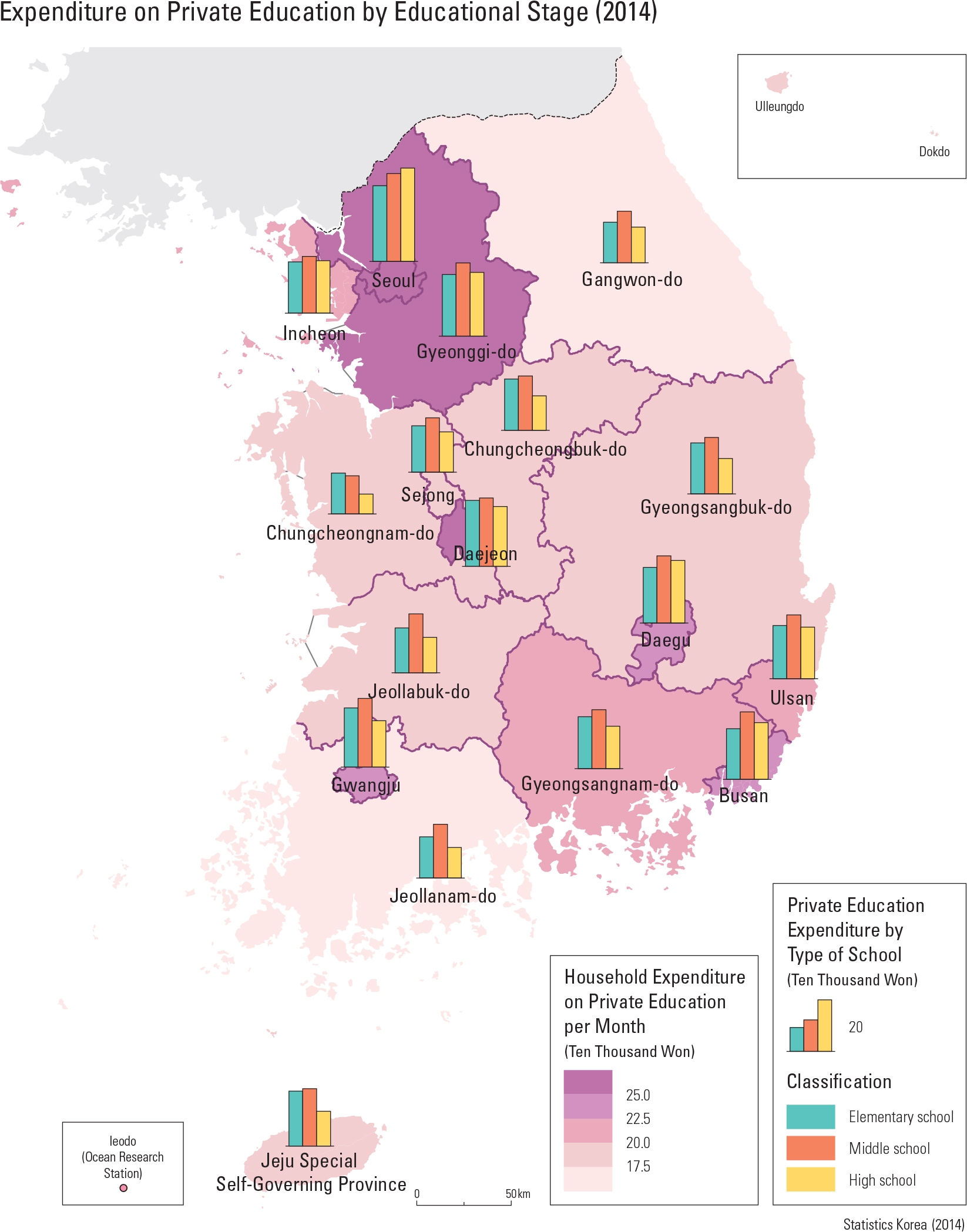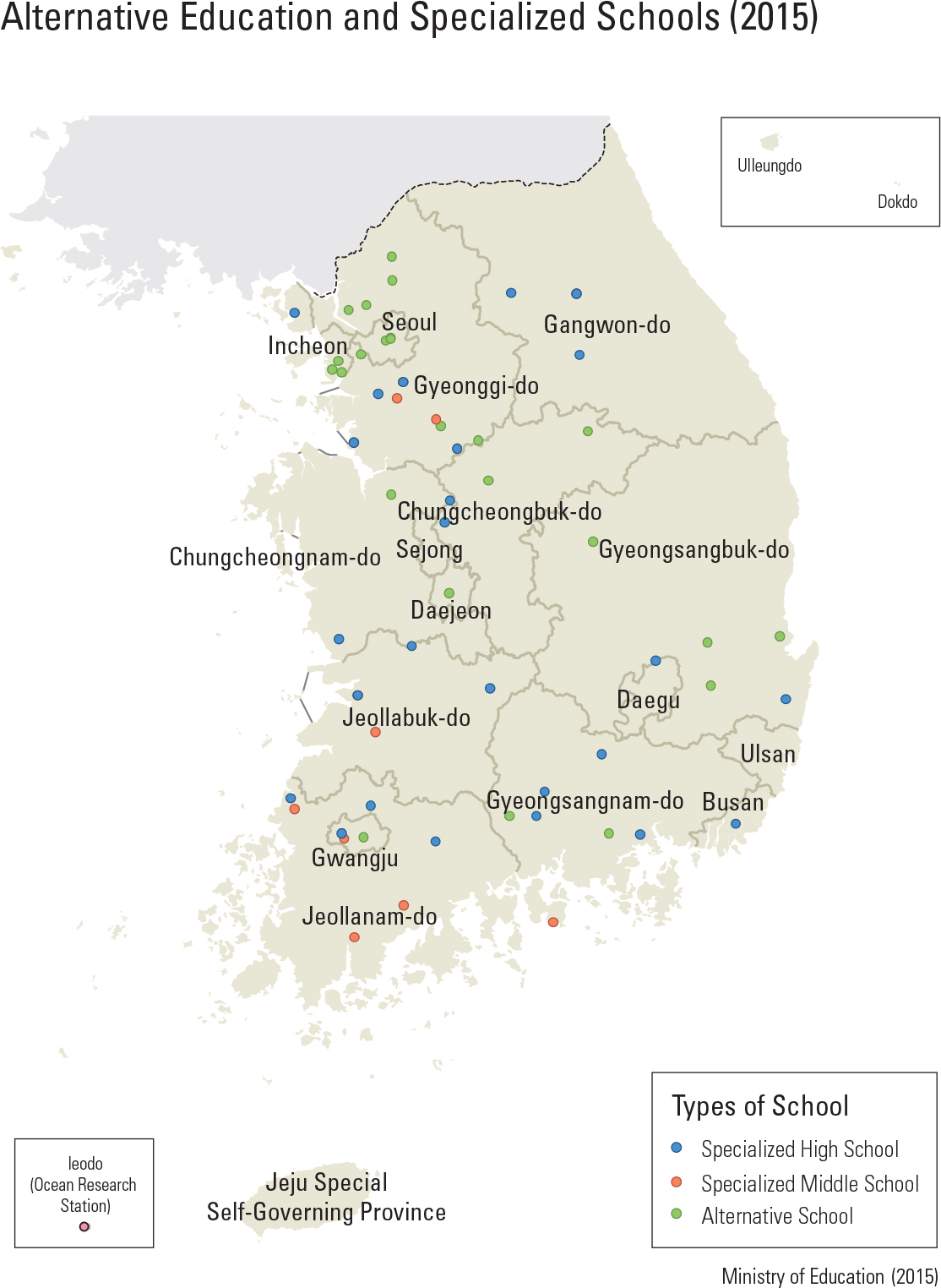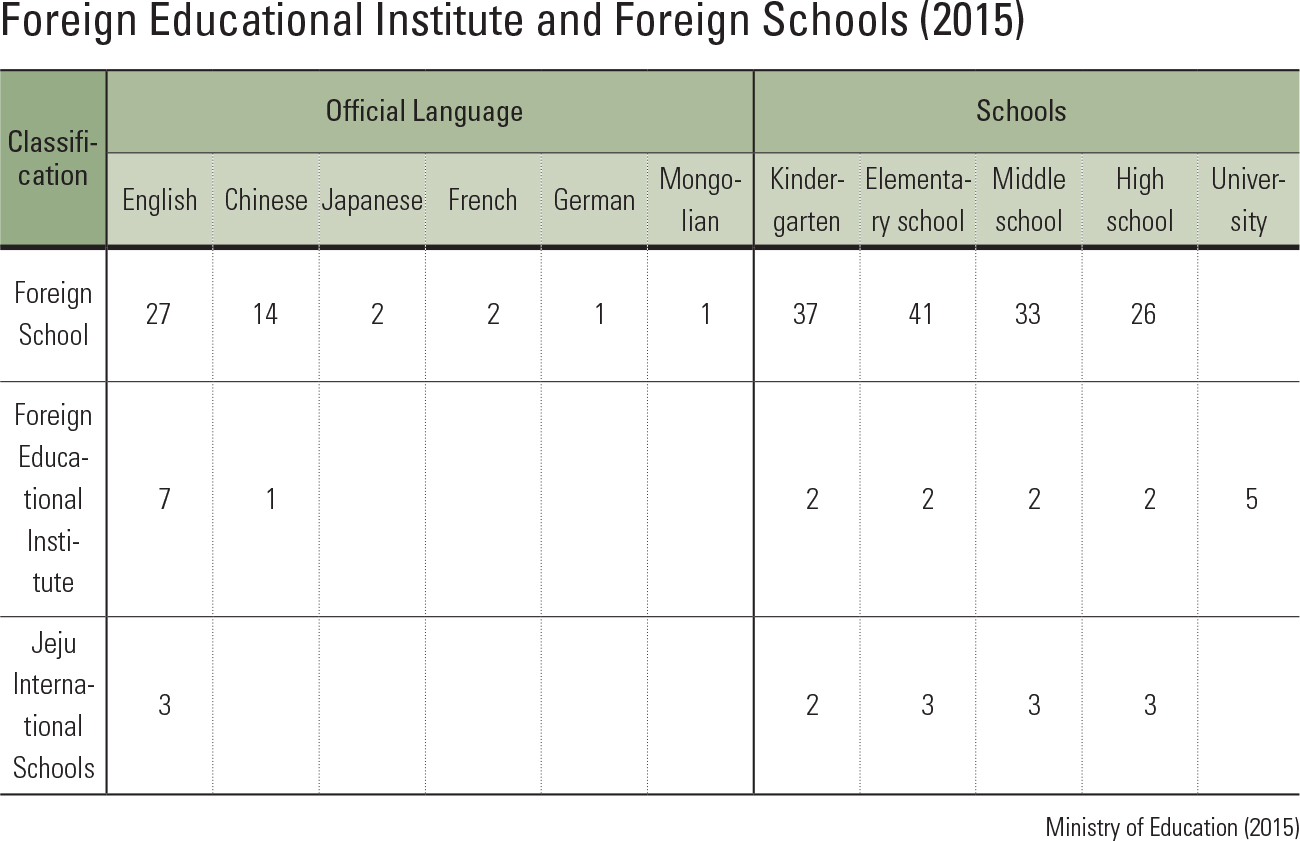English III
The enthusiasm for education in Korea has been praised for promoting and developing excellent human resources in Korea. However, excessive private education is a large part of the problem for Korean education in terms of parents’ finan- cial burden and the disparity of available private education opportunities between regions and so- cial strata. Recent statistics reveal that a very high proportion of students begin private education in elementary school. The total private education expense has de- creased in recent years, but is still over 18 trillion won according to a 2014 survey. This amount is about 44 percent of the elementary and middle school education budget. The average household spending on education is about 280,000 won, which is about 11 percent of total household expenditures. The proportion of household ex- penditure on education declined to 13.5 percent from its peak in 2009. Government policies, such as a reform of the college entrance exam system, banning prerequisite learning, and enforcing edu- cational broadcasting, have been implemented to lower private education costs. In addition, it is reported that the choice for pri- vate education is closely related to the social and economic condition of the parents. Survey shows that the higher the household income level and academic degree of the parents, the more likely it is that they spend more for private education for their children. Differences in children’s academic achievement may occur depending on participa- tion rates in private education. Regionally, private institutes are concentrated in the Greater Seoul Metropolitan area and other metropolitan cities. In addition, a difference in expenditure on private education between met- ropolitan regions and other regions exists, which has prompted a concern that educational gaps between social classes as well as between regions will be enlarged.
page_2 |
